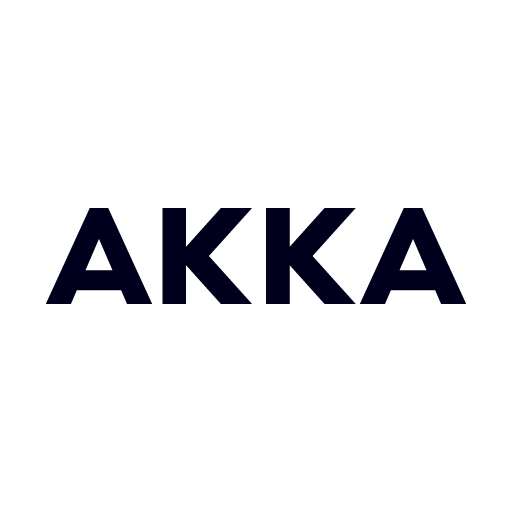Agentic AI frameworks for enterprise scale: A 2025 guide
Agentic AI systems are transforming the way enterprises approach business. Agentic AI systems are being used to improve incident response, improve productivity, and provide efficient customer support. These applications, and many others, are prompting organizations to begin planning and building agentic systems. In January 2025, Gartner found that 61% of organizations had begun their foray into agentic AI development. They predict that 33% of enterprise software applications will have agentic AI by 2028 (up from 0% in 2024).
Placing a dose of reality in their forecast, the same study found that 40% of agentic AI deployments will be canceled by 2027 due to rising costs, unclear value, or poor risk controls.
To help your organization select the correct AI agent development framework, this article provides a structured guide of essential features to evaluate against your organization's requirements. We'll then compare five of the top agentic AI frameworks against these architectural features. By comparing your team's requirements with the features of these top tools, you will empower your framework by knowing which features will best benefit your organization's agentic needs.
Why do frameworks matter for agentic AI systems?
With all the promise of agentic AI, but also clear warnings about cost and ROI, how should organizations begin their foray into agentic AI? One clear way to speed a team's development in agentic AI is to utilize a framework.
Members of the data science and engineering teams may have some experience with creating agentic models, prompts, and agents. They may also have security, observability, LLM memory, and orchestration skills.
But does the team have a deep understanding of every facet of agentic AI? Using a framework allows the team to leverage experts in all of these fields while building and deploying agentic systems.
There are now dozens of frameworks and tools that can be leveraged to build agentic AI systems, each with strong features to bring agents to life. Choosing the correct framework for your organization is a critical fork in the agentic AI development process. If a framework is chosen, but is unable to support or integrate with key parts of the existing enterprise and scale in/out on demand, your project may end up in Gartner's 40% of canceled or abandoned projects.
Clearly, picking the correct framework for your organization is a strategic decision with significant technical and business implications. Building with frameworks offers many advantages. Frameworks facilitate faster development, help teams avoid common pitfalls, and the organized design can lead to easier code maintenance. Frameworks also allow developers to focus on the logic and internal tools of their agents, not spending time reinventing code that others have perfected.
Framework fundamentals: What differentiates agentic AI frameworks?
So, what makes a great agentic AI framework?
Before you can compare different frameworks, you need to know the core capabilities of agentic AI systems. Once you understand the components of agentic AI systems, you can compare your organization's requirements and how important each component will be for your agentic AIs.
The core capabilities of agentic AI systems described in this guide are: memory, reasoning, and orchestration. Additionally, we’ve added sections on issues central to any organization deploying infrastructure: security, error handling, infrastructure, and cost.
With that, let’s jump into the fundamentals of Agentic AI architectures!
Memory
When evaluating the memory of an agentic framework, look for support for both short-term and long-term memory. Short-term memory maintains context across a single task, much like an LLM remembers your conversation and customizes each response based on previous questions and responses. Long-term memory is when the agentic AI is able to retrieve information across many conversations over a long period of time.
For a customer service agent, this might be remembering a previous conversation, and discussing the ticket from that conversation. Or a knowledge retrieval bot may recall that a user prefers data in a chart versus raw data in a CSV file, and presents the data in a chart without the user asking for it.
Some frameworks, like Akka, provide native memory modules, but most require users to integrate external systems. These can include vector databases for semantic search, or other forms like Redis, Postgres, or in-memory caches depending on the use case.
Reasoning
Reasoning is the cognitive process agents use to break down tasks, evaluate options, and decide on actions, often iterative or hierarchical in execution. One way to achieve this is through the use of reasoning algorithms. While goals are typically defined externally, reasoning algorithms help plan, adapt, and select actions to achieve those goals.
Common reasoning approaches include symbolic logic (e.g., rule-based inference), LLM-driven methods like chain-of-thought (CoT), and planning algorithms such as tree search or task decomposition.
Reasoning can be strictly programmed as steps, or can involve an algorithm like chain-of-thought where one or more LLMs have a “conversation” on how to address the problem, and evaluate the tasks created towards the solution. Each has its own distinct advantages and disadvantages.
The TL;DR is that the more elaborate reasoning strategies tend to improve success on complex tasks, but increase token usage and latency.
LLM-based reasoning is bounded by the model’s capabilities, but can be extended with tools, memory, or symbolic structures. For simple tasks, smaller, cheaper LLMs can be used, but for long reasoning tasks, the bigger, more expensive LLMs tend to perform better. The tradeoff here is often cost — reasoning can use thousands of tokens for each task.
So, when looking at your agentic AI framework: What LLMs are supported? Is there a good selection, or are there just one or two options? Which reasoning algorithms are available?
Orchestration and workflows
So we have agents, and the agents are able to reach into both short and long-term memory. But what enables agents to collaborate, delegate, and achieve end-to-end task completion across memory, tools, and reasoning modules? The answer lies in orchestration and workflow control.
Orchestration coordinates the interactions between agents, tools, memory, and tasks, often using workflows that define control flow, sequencing, and error handling. There are many strong opinions on how to build the best workflows, and this will be apparent when comparing the frameworks. So, let’s walk through some of the basics.
Is the workflow engine centralized or decentralized?
A centralized orchestration tool is likely to be similar to workflow tools like Temporal or Airflow, where each step is deterministic and defined in the workflow. The orchestration tool can monitor and log each step of every task execution, leading to better logging, easier debugging, and state management.
A decentralized workflow allows agents to reason, plan, and invoke each other independently, often using local decision-making, message passing, or emergent collaboration. In addition, decentralized workflows remove the common problem with centralized ones, which is a single point of failure.
In reality, many agentic systems have a combination of a centralized orchestration engine, where sections of each workflow or task are completed in a decentralized manner.
Is your orchestration stateless or stateful?
Stateful orchestration maintains intermediate state across steps or invocations, and the agent can pick up where it left off. Stateless orchestration treats each invocation as independent, often relying on external memory or context injection to maintain task coherence.
Depending on the types of agentic AIs planned, some organizations may be happy with fully orchestrated agents. Other organizations may wish to lean-in on agent-led decentralized systems.
Architecture types
Agentic workflows are generally composed of many agents that connect together to complete a task.
- Single-agent systems: Focused problem-solving using one agent.
- Multi-agent systems: Multiple specialized agents collaborate to solve tasks.
- Vertical architectures: One agent leads the task and delegates tasks to additional agents. These agents return the results to the lead agent to continue the overall task.
- Horizontal architectures: Multiple agents work together collaboratively, but all as equals.
- Hybrid approaches: Combinations of the above systems.
Security
Security is not exclusive to agentic AI systems, but, like all tools installed in the enterprise, agentic frameworks should be examined closely to ensure they meet security requirements.
Agents will have access to proprietary information. How does the framework handle data governance? Is it easy to add filters to agent inputs and outputs to protect proprietary data? What guardrails are included?
Does your organization have compliance requirements? Some, but not all of the frameworks, meet the compliance requirements for HIPAA, SOC2, DORA, etc.
Error handling
What happens when there is a problem? Agentic AIs are notorious for being hard to debug. How do the frameworks make debugging and monitoring agents easier?
Can chats be replayed? Replaying chats can be an excellent way to detect incorrect answers and hallucinations. Can agentic flows add human-in-the-loop steps for checks and accuracy?
Cost management
Reasoning algorithms can use thousands of tokens at each step. Cost control is often a central reason that agentic AIs are cancelled. What tools are provided to track and limit token usage?
Infrastructure
Can agents and all architecture be run in multiple regions across multiple providers around the world? And, how efficient are infrastructure resources managed by the runtime?
Ease of development
How easy is it to create an agent? Does the framework support rapid prototyping? Or is the development of agents a slower task?
Is the framework production-ready? Can it easily scale with growth?
The top agentic frameworks: How they stack up?
Now that we have laid out the fundamentals of what AI frameworks can support, let’s introduce five of the top agentic AI frameworks, and see how they stack up across the categories we have defined. In this review, we’ll examine Akka, LangChain (LangGraph), CrewAI, Microsoft AutoGen, and OpenAI Agent SDK.
| Feature | Akka | LangChain (LangGraph) | CrewAI | Microsoft AutoGen | OpenAI Swarm |
|---|---|---|---|---|---|
| Memory | Built-in short & long-term | Built-in short & long-term | Short & long-term support | External database required | Short-term built-in, SQLite for long-term |
| LLM support | Anthropic, Gemini, HuggingFace, OpenAI | LLM agnostic | Many LLMs supported | OpenAI & Anthropic | OpenAI models (experimental) |
| Reasoning | Chain-of-thought & dynamic | Chain-of-thought & ReAct | Multiple reasoning types | Custom chain-of-thought & ReAct | OpenAI models (experimental) |
| Orchestration | Stateful workflow engine | Function/graph driven | Stateless event-driven | Simple task orchestration | LLM & code-based |
| Architecture types | Single / multi-agent, vertical / horizontal | Multi-agent, parallel, human-in-loop | Vertical focus, limited horizontal | Horizontal & vertical multi-agent | Multi-agent supported |
| Security | Compliance certified | No certifications | Optional Portkey integration | Not built-in | Basic guardrails |
| Error handling | Session replay, human-in-loop, monitoring | Strong guardrails, replay | Task-specific replay | No audit/replay | Tracing & debugging |
| Cost management | Dashboard with forecasting | LangSmith token tracking | Native + optional Portkey | Not built-in | Not available |
| Infrastructure | Multi-region replication | Single region, self-hostable | Self-hosted or enterprise | External infra required | OpenAI hosted only |
| Development | Streamlined SDK & DevEx | Complex setup, production-ready | Limited orchestration | Fast prototyping | Full SDK, early stage |
| Production ready | Enterprise-grade | Fully ready | Limited features | External infra needed | Early stage |
Akka
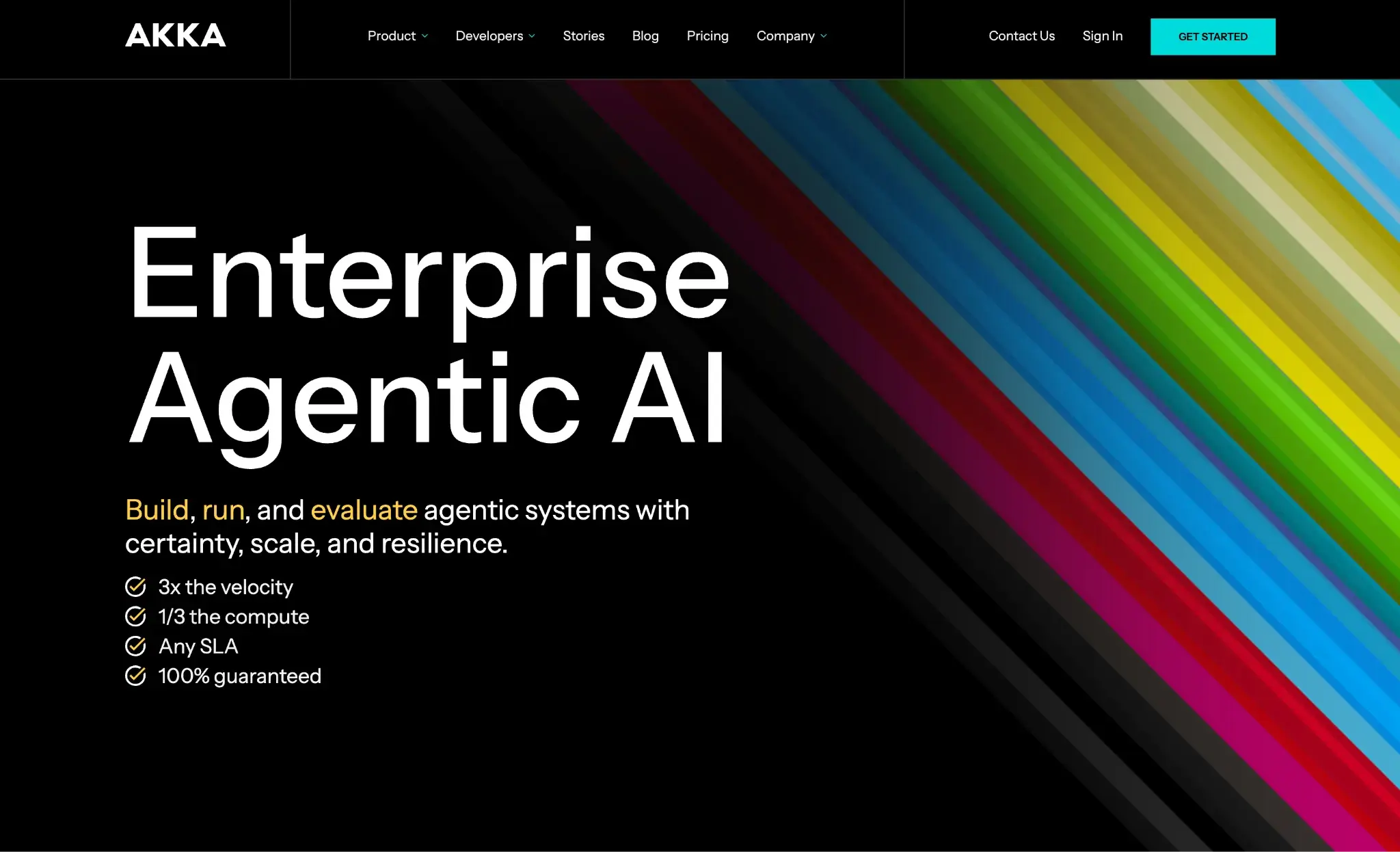
Akka is an enterprise-grade agentic AI platform that provides a comprehensive, integrated solution for building production-ready agentic systems. Built on 15 years of experience powering distributed systems, Akka offers four core components that work seamlessly together: Orchestration, Agents, Memory, and Streaming.
The platform is designed for enterprise-scale performance, providing all necessary components in a single SDK rather than requiring teams to integrate multiple disparate tools.
- Memory: Akka Memory provides both short term and long term memory. The long term memory persists semantic knowledge, skills, and retrieved data across users, sessions, agents, and systems.
- LLMs supported: Anthropic, Gemini, HuggingFace, OpenAI.
- Reasoning: Chain-of-thought and ReAct dynamic reasoning are fully supported
- Orchestration and workflows: A workflow engine is a core part of the Akka SDK, and it is stateful, so no information is lost should a workflow stop or restart. Dynamic Orchestration is also supported, where a simple framework is wrapped around agents that control most of the steps.
- Architecture types: Single and multiple agent workflows are supported. Vertical and horizontal architectures are easily created.
- Security: Fully compliant with many compliance standards.
- Error handling: Akka supports session replay, human-in-the-loop, and has logging and monitoring built-in.
- Cost management: Dashboard monitoring of cloud spend, with forecasting.
- Infrastructure: Akka transparently and continuously replicates application data across all configured regions.
- Documentation: Excellent and complete documentation. Agentic search to quickly find content.
- Ease of development: SDKs, composable components, and a streamlined developer experience means that developers can become productive quickly. Akka is the only framework reviewed with a customized agentic AI powering the developer documentation.
LangChain (LangGraph)
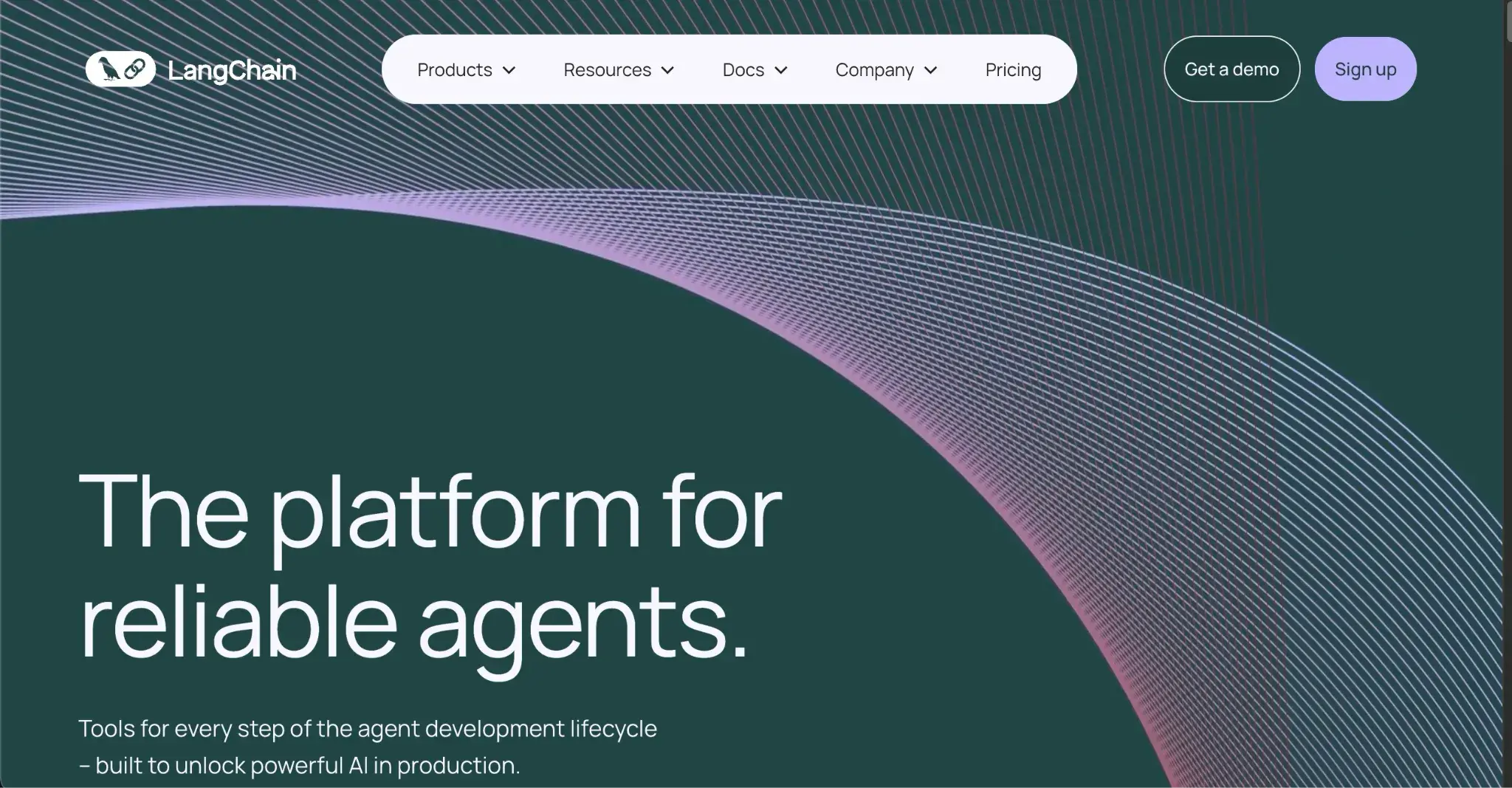
Langchain and Langgraph are complementary tools used to build Angentic AIs.
- Memory: Both short and long term memory are supported out of the box.
- LLM usage: LangGraph is ambivalent to what LLMs are used under the hood.
- Reasoning: Native support for chain-of-thought and ReAct dynamic reasoning.
- Orchestration and workflows: Function or graph driven architectures.
- Architecture types: Supports multiple agents, agents running in parallel, human in the loop.
- Security: LangChain and LangGraph hold no compliance certifications at this time.
- Error handling: Strong guardrail support with native libraries. Deterministic system means that replay is possible, and agents can restart if there is an error.
- Cost management: LangSmith offers token tracking.
- Infrastructure: Single region. Can be self hosted.
- Ease of development: Setting up a development environment can be complex. Fully production ready.
CrewAI
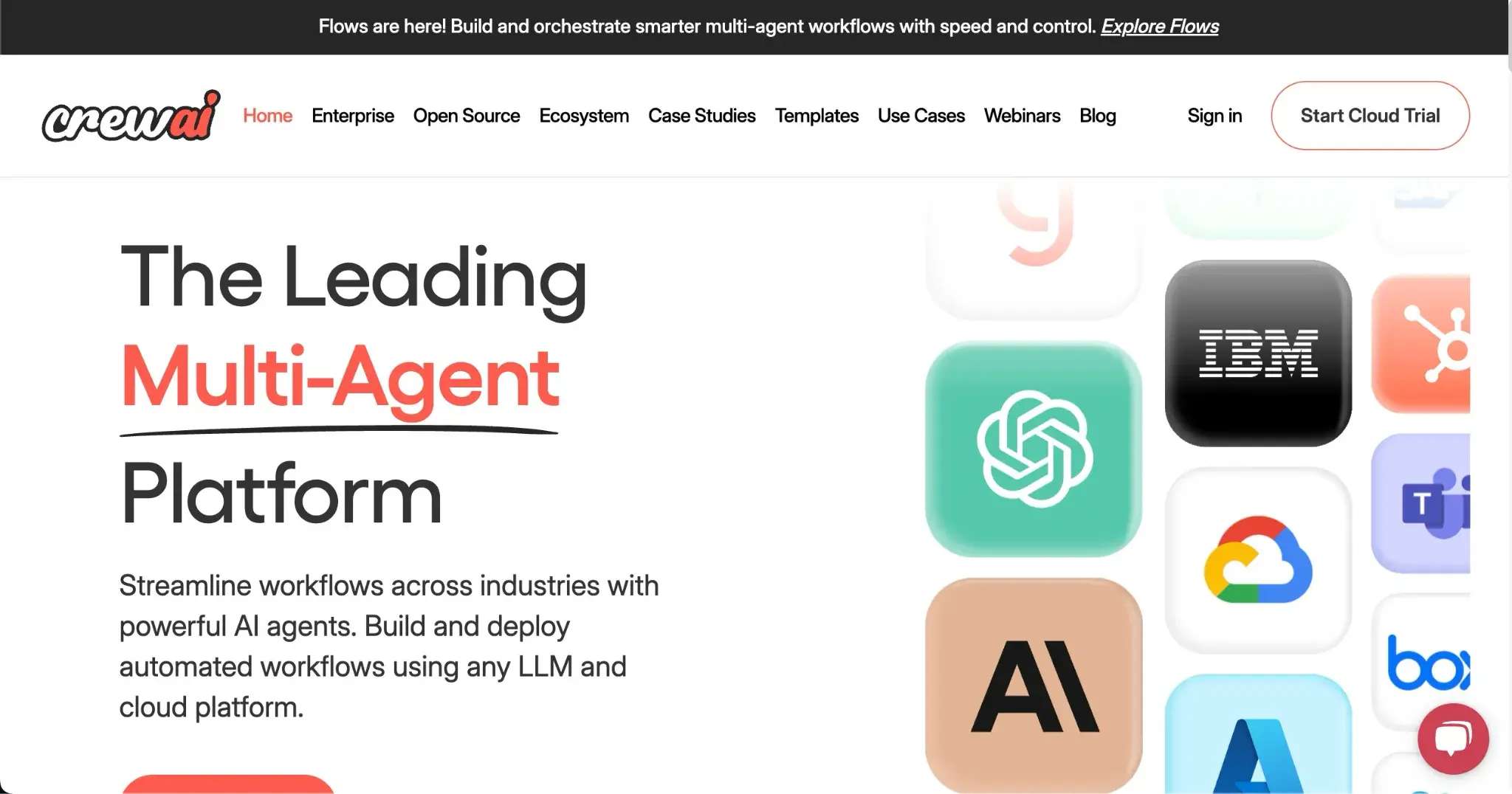
- Memory: Short and long term memory support.
- Reasoning/LLM usage: CrewAI supports many LLMs (full list). Many reasoning types are supported.
- Orchestration and workflows: Stateless, simple orchestration through event driven graphs.
- Architecture types: Vertical agent support, limited horizontal agent support.
- Security: Audit and observability logs available with optional integration with Portkey.
- Error handling: Replay is available for specific tasks. Guardrails must be programmed into agents.
- Cost management: Token management with optional Portkey integration. Token usage tracked natively.
- Infrastructure: Can be self hosted, or use CrewAI enterprise.
- Ease of development: Lacks advanced orchestration capabilities.
Microsoft AutoGen
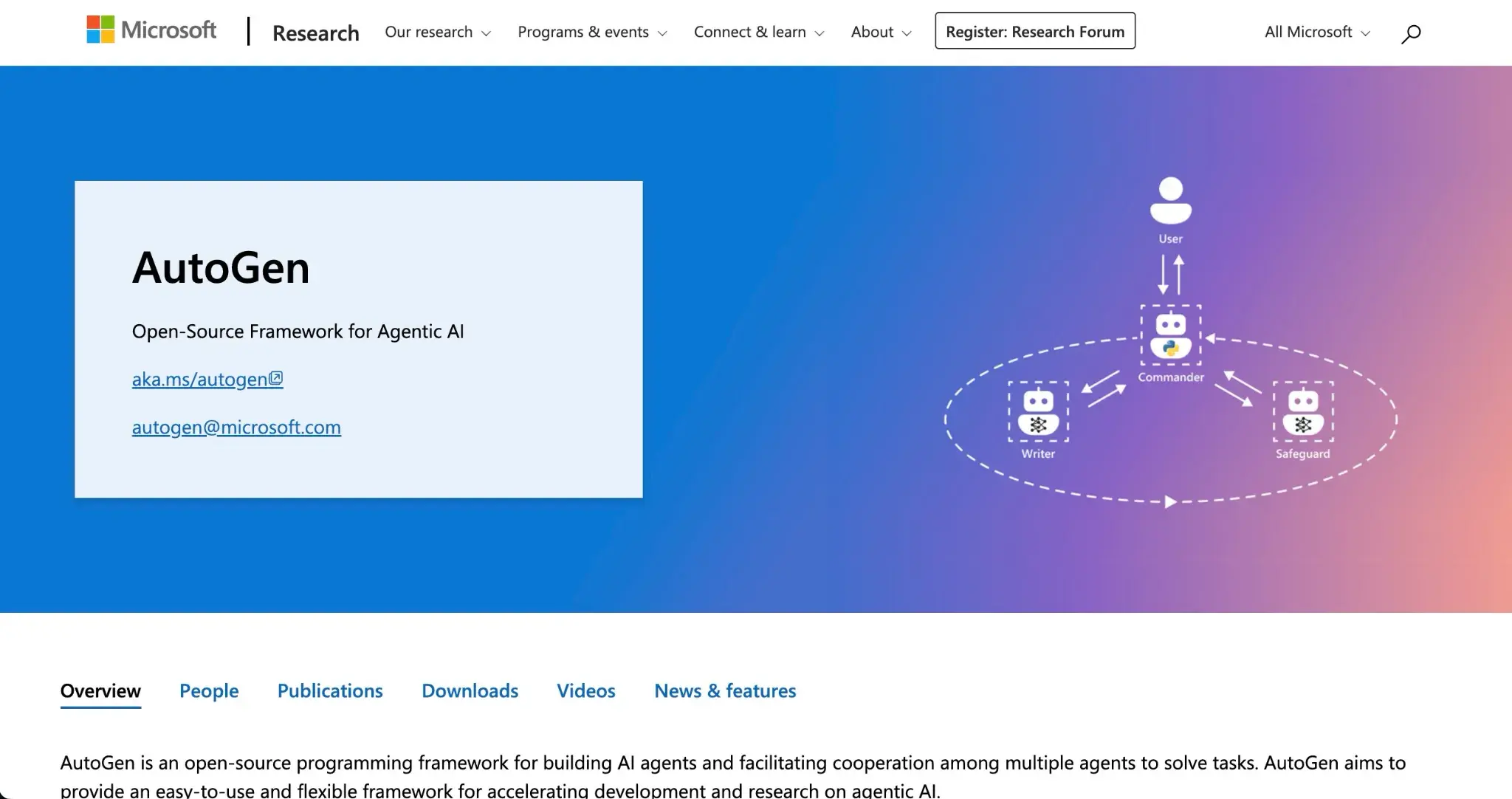
- Memory: Not supported. Requires external memory database for both short and long term memory.
- Reasoning: OpenAI and Anthropic LLMs. Chain-of-thought and ReAct type reasoning can be build with custom agents.
- Orchestration and workflows: Simple task orchestration agent.
- Architecture types: Horizontal and vertical multi-agent workflows are supported.
- Security: Not built in.
- Error Handling: No Audit or replay logs.
- Cost management: No token management built in.
- Ease of development: Fast prototyping. Requires external infra to run in production.
OpenAI Swarm
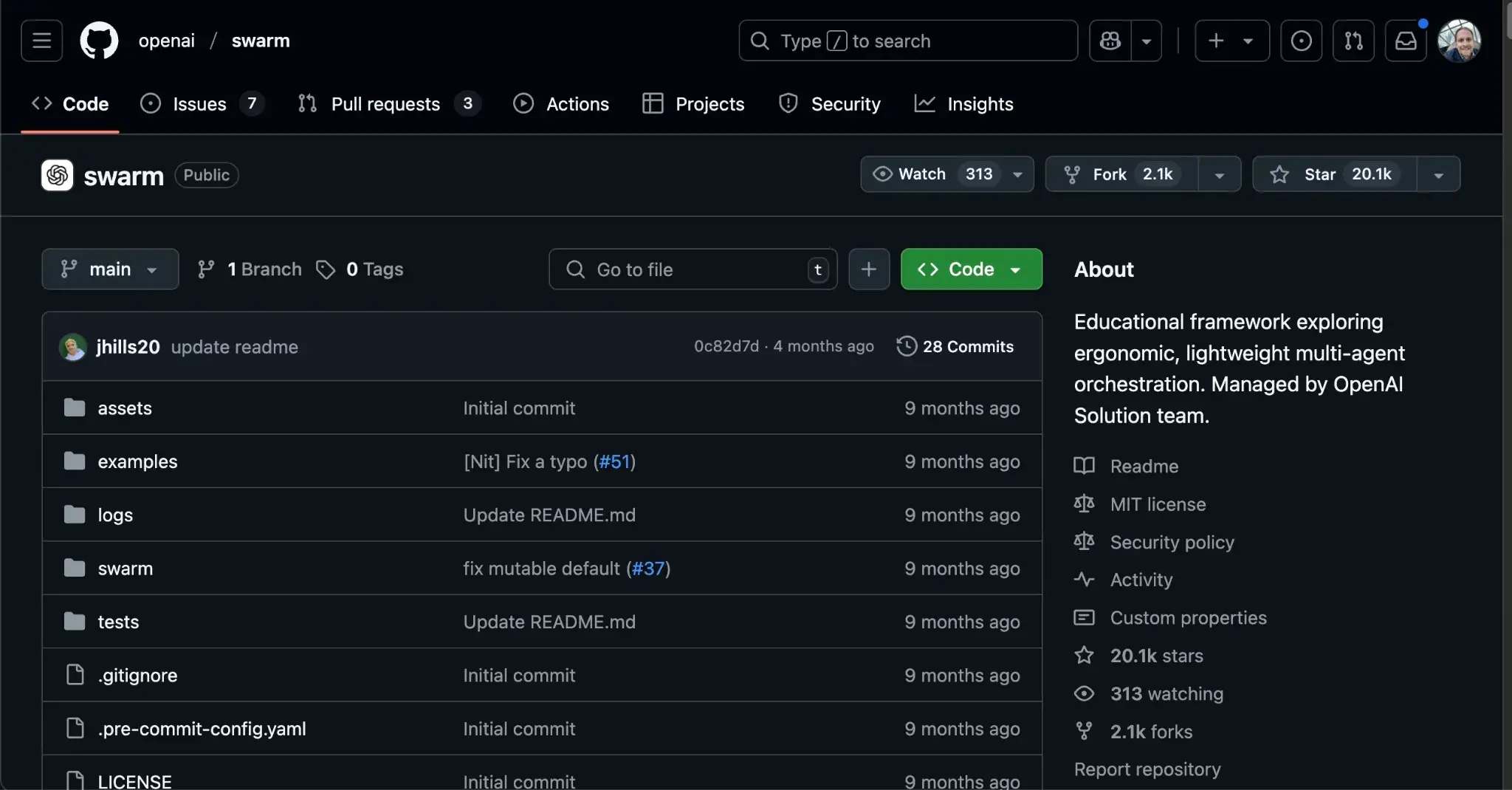
Open AI Agents is a lightweight framework used to build agentic AIs. Developed by the OpenAI team, it is open source, built on the original OpenAI Swarms.
- Memory: Short term memory is built in. Long term memory requires SQLite.
- Reasoning: Designed for OpenAI models. Experimental
- Orchestration and workflows: Orchestration by LLMs and via code.
- Architecture types (single/multi agent): Multi agent is supported.
- Security: Guardrails are designed to monitor inputs and outputs to stay inside limits.
- Error Handling: Tracing and debugging of all workflows built in. Visualization plugin gives a visual map of the orchestration path.
- Cost management: No token management available.
- Infrastructure: Hosted by OpenAI. Not advertised multi region support.
- Ease of development: Fully featured SDK, but still early.
Framework selection strategy: Key considerations checklist
With this wealth of data on top agentic AI frameworks, what are some tricks to finalize a selection?
Start with matching the enterprise’s key goals (reasoning, scalability, agent coordination) with the features offered by the frameworks described.
- Is your organization looking for structured centralized agent control, or more autonomy and flexibility? (Or are you looking for a mixture of both?)
- Is community support, and community driven extensions of interest, or is the goal all-in-one first party integrations with your existing infrastructure?
- How important is built in cost-control? Agentic AIs (especially reasoning AIs) can use thousands of tokens for each task.
Test frameworks with a proof of concept
If your selection process has narrowed the choices down to a few options, it may make sense to build a proof of concept/pilot project with the finalists.
Pick a project with limited scope, but one that also has a high impact. This is not the time to try all the bells and whistles, but to look at the most important aspects of the frameworks that will be leveraged by the majority of the planned agents.
Before building, create a checklist that defines success criteria.
- What integrations are planned? RAG tooling? APIs? Will you need a standalone memory store, observability or other tools?
- How easy is setting up orchestration or building the workflows?
- Do the agents interface and connect well with your existing infrastructure and tooling?
- How easy is it to test and benchmark the Agents?
- Does observability and logging mesh well with existing systems?
- Is retracing conversations and tasks easy?
- How fast are the agents? Is the latency acceptable for the intended use cases?
- Is token usage within an acceptable range? Are there tools to cut off token usage?
- Is changing LLMs a simple or arduous task?
- Are the agents created production ready? Or will additional work be needed to scale?
This can also be an opportunity to gauge the team’s readiness and preparedness to build agentic AIs. How well do they work with the tools at hand? Was the learning curve easier for one tool over another?
Building production-ready agentic AI with Akka
Building agentic AI agents is challenging, with many new infrastructural and coding paradigms. Using an agentic AI framework is a way to jump start development, while also keeping the team on track and avoiding common pitfalls.
In this guide, we have walked through many of the critical features in agentic AI frameworks. Every organization has different needs and requirements for agentic AI agents, but it is likely that this guide will help you narrow your search from many frameworks to one or two.
When examining the way agentic AIs frameworks contribute core architectural features and capabilities, Akka’s feature set includes all of the critical tooling required to build modern agentic AI systems.
With built in orchestration, short and long term memory, wide LLM support, and easy agent creation, Akka is built in with all of the agentic tools required to build reasoning agents. Akka supports vertical agents, where one agent guides others, as well as horizontal, where all the agents work together to solve tasks.
Akka's session replay, human-in-the-loop, and full observability, means that debugging and testing agents is a straightforward process. Finally, Akka’s agentic framework is compliant with several compliance frameworks, and supports multi-region deployment — allowing for fast international use of agents.
Perhaps most importantly for teams new to developing agentic AIs, Akka’s documentation is complete and easy to parse. Interestingly, of the agentic AIs reviewed, Akka’s docs is the only one with an agentic AI that provides answers and links to help developers quickly discover the solution to any question they might have.
While all of the frameworks in this guide are very good, Akka stands out, and is a great option for building your agentic AI agents. Schedule a demo today to get started!
Posts by this author


